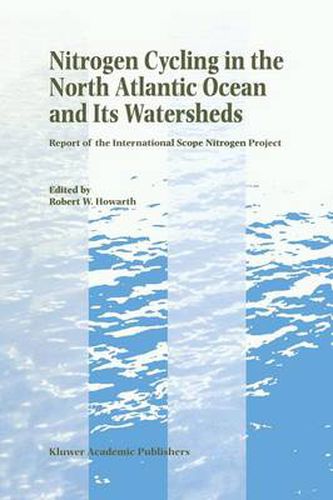Readings Newsletter
Become a Readings Member to make your shopping experience even easier.
Sign in or sign up for free!
You’re not far away from qualifying for FREE standard shipping within Australia
You’ve qualified for FREE standard shipping within Australia
The cart is loading…






This title is printed to order. This book may have been self-published. If so, we cannot guarantee the quality of the content. In the main most books will have gone through the editing process however some may not. We therefore suggest that you be aware of this before ordering this book. If in doubt check either the author or publisher’s details as we are unable to accept any returns unless they are faulty. Please contact us if you have any questions.
Human activity has dramatically altered the global nitrogen cycle in recent decades. These changes are not evenly distributed around the world; rather, they are greatest in regions of significant industrial and agricultural activity, as the synthesis and use of inorganic fertilizers, cultivation of legumes, burning of fossil fuels, and the simple act of concentrating humans and animals in dense populations all lead to the release of excess, reactive forms of nitrogen into the environment. In part because reactive nitrogen is frequently a limiting nutrient in many terrestrial and aquatic systems, an excess can lead to a variety of adverse effects on both environmental and human health.
The North Atlantic Ocean and its contributing watersheds constitute a region which has seen perhaps the greatest increase in anthropogenically-derived nitrogen. In May of 1994, the International Scope Nitrogen Project, with funding from the Andrew Mellon Foundation, the United Nations Environment Program, and the World Meteorological Organization, sponsored a workshop held on Block Island, RI, USA, entitled “Nitrogen Dynamics of the North Atlantic Basin’. More than 50 scientists from 12 different countries convened with a unique set of goals: an integrated and comprehensive estimate of the current nitrogen cycle of the ocean, coastal systems, and contributing watersheds of the North Atlantic region; an analysis of human-induced changes to those cycles; and an assessment of the current and future effects of human-induced changes to nitrogen cycling throughout the globe.
$9.00 standard shipping within Australia
FREE standard shipping within Australia for orders over $100.00
Express & International shipping calculated at checkout
This title is printed to order. This book may have been self-published. If so, we cannot guarantee the quality of the content. In the main most books will have gone through the editing process however some may not. We therefore suggest that you be aware of this before ordering this book. If in doubt check either the author or publisher’s details as we are unable to accept any returns unless they are faulty. Please contact us if you have any questions.
Human activity has dramatically altered the global nitrogen cycle in recent decades. These changes are not evenly distributed around the world; rather, they are greatest in regions of significant industrial and agricultural activity, as the synthesis and use of inorganic fertilizers, cultivation of legumes, burning of fossil fuels, and the simple act of concentrating humans and animals in dense populations all lead to the release of excess, reactive forms of nitrogen into the environment. In part because reactive nitrogen is frequently a limiting nutrient in many terrestrial and aquatic systems, an excess can lead to a variety of adverse effects on both environmental and human health.
The North Atlantic Ocean and its contributing watersheds constitute a region which has seen perhaps the greatest increase in anthropogenically-derived nitrogen. In May of 1994, the International Scope Nitrogen Project, with funding from the Andrew Mellon Foundation, the United Nations Environment Program, and the World Meteorological Organization, sponsored a workshop held on Block Island, RI, USA, entitled “Nitrogen Dynamics of the North Atlantic Basin’. More than 50 scientists from 12 different countries convened with a unique set of goals: an integrated and comprehensive estimate of the current nitrogen cycle of the ocean, coastal systems, and contributing watersheds of the North Atlantic region; an analysis of human-induced changes to those cycles; and an assessment of the current and future effects of human-induced changes to nitrogen cycling throughout the globe.